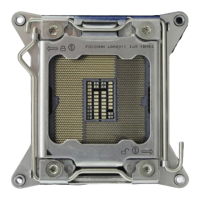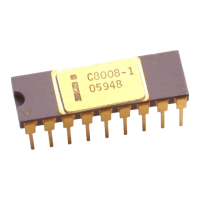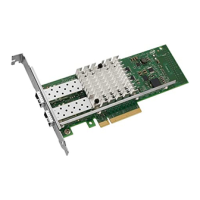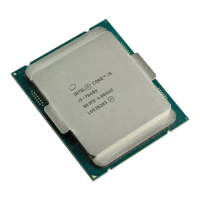Design Guide 195
Schematic Checklist
Unused 16 bit
interfaces
• All data and strobe signals can be left as no
connect.
• HIVREF_[D:A] must be connected to the
reference voltage divider circuit.
• HIVSWNG_[D:A] must be connected to the
reference voltage swing divider circuit.
• Leave any of the HIRCOMP_[D:A] as no
connects if that hublink is not used.
• The MCH has integration
detection logic that will detect
unpopulated 16-bit interfaces
without external pull-ups and
pull-downs.
• Refer to Section 7.2.5.
Voltage References – Power Planes
HDVREF[3:0]
HAVREF[1:0]
HCCVREF
• Use one dedicated voltage divider for all these
signals.
• Decouple the voltage divider with a 1 µF
capacitor.
• To provide constant and clean
power delivery to the data,
address and common clock
signals of the host AGTL+
interface.
• Refer to Section 12.2.10.
VREF_DDR[5:0] • Decouple each signal to ground with 0.1 µF
parallel capacitor at each DIMM and MCH pin.
• Refer to Section 6.9.
HXSWING
HYSWING
• The host compensation reference voltage can
be implemented using a simple voltage divider
circuit.
• 150
Ω ± 1% pull-down to ground
• 301
Ω ± 1% pull-up to VCC_CPU
• C1 = C2 = 0.01 µF
• The HXSWING and
HYSWING inputs of MCH are
used to provide reference
voltage for the compensation
logic.
• Refer to Section 5.3.5.
HISWNG_[D:A],
HIVREF[D:A]
• MCH Hub reference swing voltage
= 0.800 V ± 5%.
• R1 = 392
Ω ± 1%, R2 = 499 Ω ± 1%,
R3 = 453
Ω ±1%.
• C1= 0.1 µF, C2 = 0.01 µF.
• Refer to Figure 7-5 and Figure 7-8.
• The MCH 16-bit hub
interfaces use a
compensation voltage to
control the buffer voltage
characteristics. If multiple 16-
bit hub interfaces are used, an
HISWNG divider circuit can
be shared among the
interfaces as long as the trace
length from the divider circuit
is less than 3.5".
• Refer to Section 7.2.2 and
Section 7.3.2.
NOTES:
1. The BREQ0# pin on the MCH corresponds to the BR0# pin on the processor.
2. The CPURST# pin on the MCH corresponds to the RESET# pin on the processor.
3. HA[35:3]# pins on the MCH correspond to A[35:3]# pins on the processor.
4. HD[63:0]# pins on the MCH correspond to D[63:0]# pins on the processor.
5. HADSTB[1:0]# pins on the MCH correspond to ADSTB[1:0]# pins on the processor.
6. HADSTBN[3:0]# pins on the MCH correspond to DSTBN[3:0]# pins on the processor.
7. HADSTBP[3:0]# pins on the MCH correspond to DSTBP[3:0]# pins on the processor.
8. HREQ[4:0]# pins on the MCH correspond to REQ[4:0]# pins on the processor.
9. The HTRDY# pin on the MCH corresponds to the TRDY# pin on the processor.
10.The MCH XERR# pin can be connected to the processor IERR# pin or the processor MCERR# pin.
11.In HI1.0 mode, HI_STBF and HI_STBS used to be referred as HI_STB# and HI_STB respectively.
Table 13-2. MCH Schematic Checklist (Sheet 3 of 3)
Checklist Items Recommendations Comments
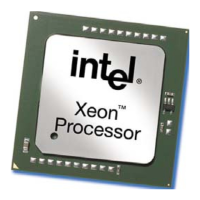
